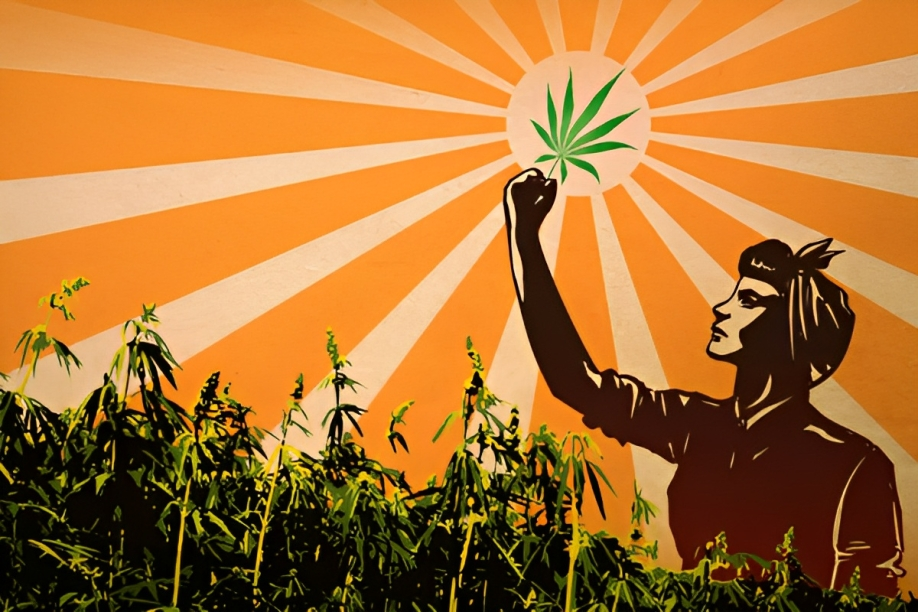
Nations’ new fibre or an old one now getting discovered? The standard answer that could fit into this scenario is that people now realise the benefits of this wonder plant.
Therefore, the old plant now getting discovered as a plant that is the solution to not one but multiple issues.
With the growth in popularity, various entrepreneurs, startups, associations and businessmen are entering the hemp industry to make it big.
Is the plant all worth it?
Introduction To The Hemp Plant
Cannabis sativa, widely known as industrial hemp, is a plant in the Cannabaceae family that is grown for its edible seeds or bast fibre. A group of Cannabis sativa cultivars developed primarily for commercial or therapeutic purposes because of which they can be used to create a variety of goods.
Eversince hemp farming has been made legal in some states, there is now a list of states that are in the process of allowing for cultivating and seeking the plant.
The Indian industry for hemp-based foods and beverages is about to take off as hemp (as per sources) (Cannabis Sativa) farming has been made legal in numerous Indian states and food safety regulators are establishing standards for hemp products.
Be it the use, sale, or cultivation of Hemp, there has been a great deal of confusion and doubt.
What do we get? Ropes, textiles, clothes, footwear, food, paper, bioplastics, insulation, and biofuel are just a few of the commercial and industrial products that can be manufactured from hemp, which is frequently referred to as the “wonder plant”.
As per scientific research and reports, 32% of Indians were unaware of CBD and 27% of them had never heard of cannabis/marijuana. Turns out, half the population are still unaware!
Uses of the multipurpose plant
Due to the trend toward sustainable and plant-based industries, hemp-based products have recently shown exponential growth, potential, and demand.
Hemp as Fibre
Hemp fibres, which come from the cannabis-related hemp plant, are regarded as one of the strongest members of the family of natural fibres.
Due to their biodegradability and lower density compared to synthetic fibres, fibres have gained widespread acceptance as reinforcements in composite materials.
Hemp has historically been gathered at full flowering for textile uses, but today it is primarily picked at seed maturity for dual-purpose uses and has a great deal of potential as a multifunctional crop.
The benefits of hemp fibre are:
- Breathable and Insulating
- Highly Durable
- Non-synthetic = no microplastics
Hemp as Therapy
Throughout history, medicines were one such sector where Hemp was used for its therapeutic properties.
As we know cannabis and hemp are both members of the sativa family of plants. Hemp, as opposed to cannabis, contains extremely little delta-9-tetrahydrocannabinol (THC).
The usage of hemp for eczema, arthritis, high cholesterol, constipation, and many other illnesses is widespread, but there isn’t any reliable scientific data to back it up.
Hemp is becoming more and more well-liked as a treatment for a variety of ailments, such as stress and skin problems.
Environment Friendly
Another word for hemp could be “Nature’s purifier”. The plant swiftly purifies the air we breathe by capturing carbon dioxide from the environment.
In fact, hemp is a considerably more effective sequester of carbon dioxide than trees, removing 1.63 tonnes of carbon from the air for every tonne of hemp produced.
Since alternative sustainable materials are required for the textile sector, as per research (industrial) hemp has great potential to replace cotton for fibre.
Benefits of Hemp environmentally:
- Plastic microparticles and textile production waste are polluting our water, air, and land more than ever. Hemp may hold the key to solving our issues thanks to its revival as a cash crop and its capacity to be incorporated into regenerative agricultural techniques.
- Because the paper we use today is produced from wood, there is a serious deforestation problem. Hemp paper doesn’t yellow and is more durable than paper made from wood pulp. Over 400-year-old literature and manuscripts about hemp are still intact.
- By pressing the hemp seed into oil, hemp may be converted into biodiesel, and the fermented stalk can be converted into ethanol and methanol.
- Although it is not the best option, biofuels are considerably better for the air because they are non-toxic, biodegradable, and emit less greenhouse gas than fossil fuels.



























